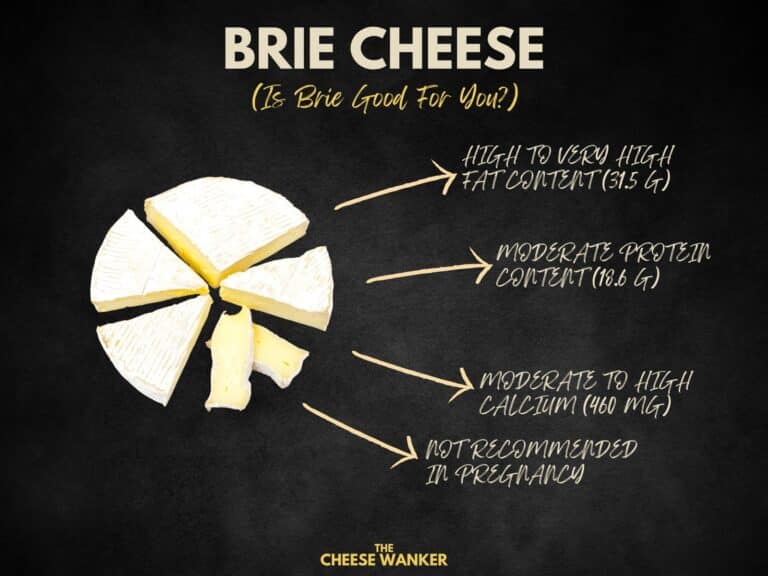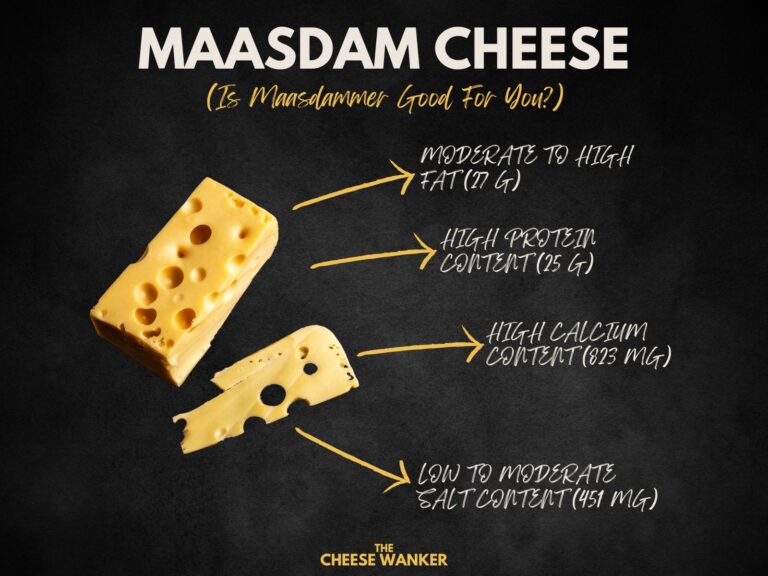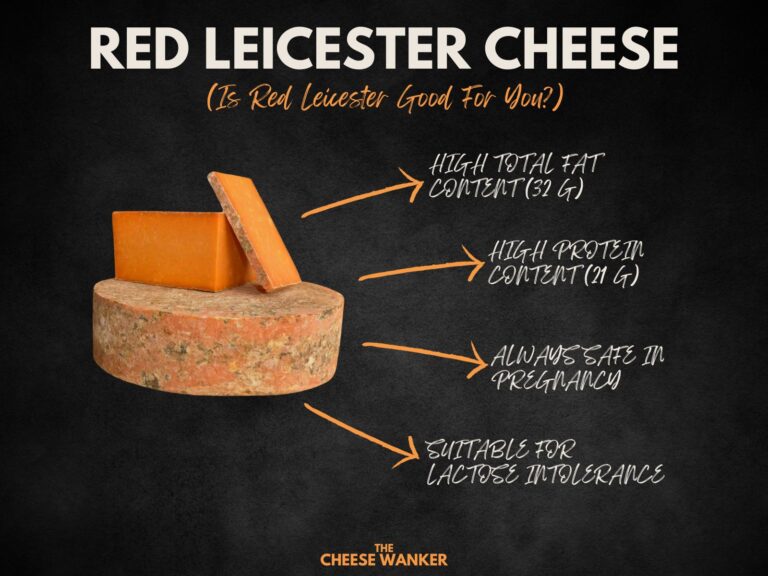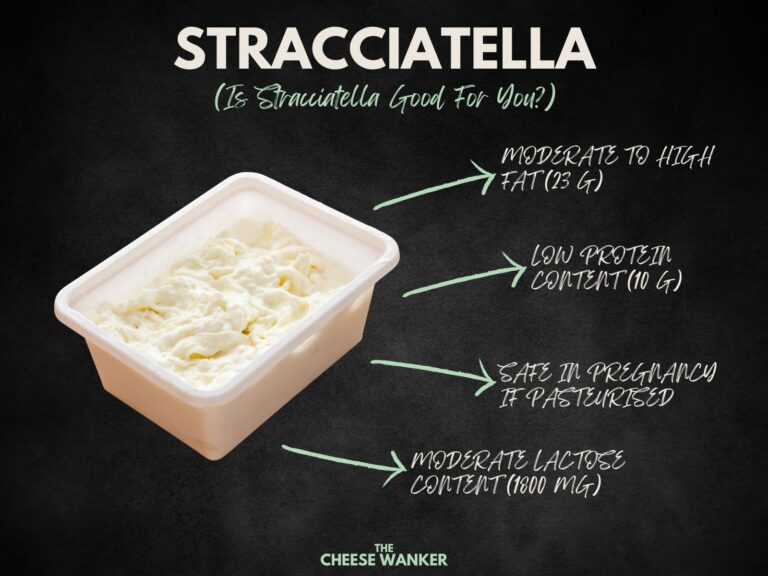Brunost, also known as “Brown Cheese”, is a Norwegian food that has a distinct caramel-like flavour. It has a brownish colour and a sweet, nutty taste, which makes it a popular food among Norwegians and foodies worldwide. But is it actually healthy? Read on to discover the nutrition facts for Brunost.

SEE ALSO: Nutrition facts for popular world cheeses in The Cheese Wanker’s index →
What is Brunost?
Affectionately known as Brown Cheese, Brunost is a culinary treasure that finds its roots in the picturesque landscapes of Norway. This uniquely Norwegian cheese product has a history as rich as its flavour. However, there is an ongoing debate as to whether Brunost should be classified as cheese.
Traditionally made by boiling a mixture of whey, milk, and cream until it caramelizes, Brunost boasts a distinct caramel-like sweetness, a result of the Maillard reaction during the cooking process. Its origins can be traced back to rural farms where resourceful Norwegian farmers discovered a way to utilize surplus whey, turning it into this delightful, sweet treat.
Over time, Brunost gained popularity not just for its taste but also for its ability to capture the essence of Norway’s pastoral life, making it a beloved symbol of Norwegian culinary heritage.
Its colour ranges from a deep golden-brown to a rich caramel, resembling fudge, and its texture is smooth and slightly sticky. Moreover, its flavour is a harmonious blend of sweetness with subtle hints of caramelised sugar and a mild tanginess from the whey.
When thinly sliced, it has a creamy, almost melt-in-the-mouth quality. Its unique taste and texture make it a versatile ingredient, equally at home on a breakfast table, in desserts, or even paired with savoury items.
Nutrition fact sheet
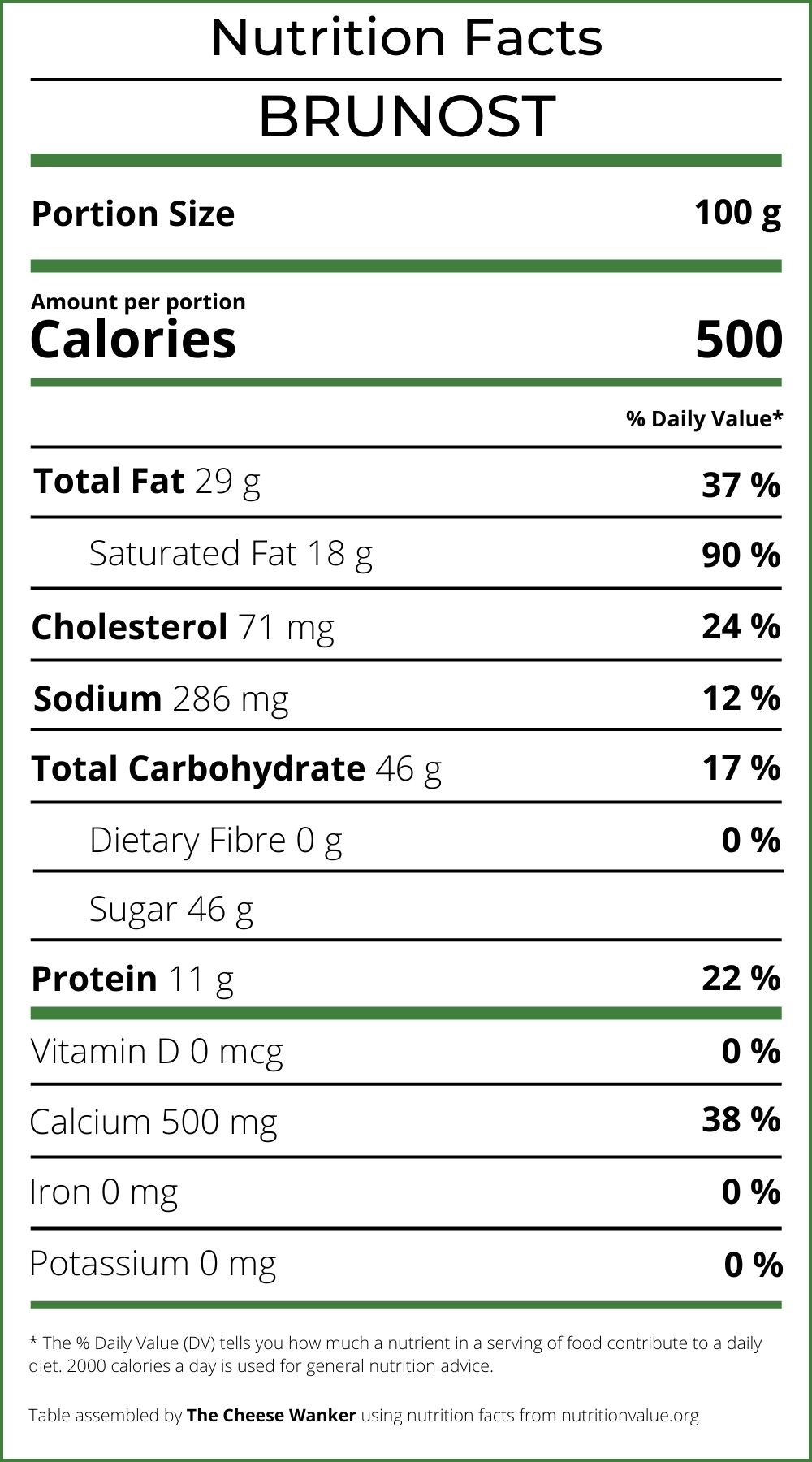
Nutritional review for Brunost
Brunost is a staple of Norwegian diets and is a good source of fat, proteins and calcium. You can read more about the history of this Norwegian icon by clicking here.
Here are some of its key nutrition facts:
Lactose Intolerance
Because it is made from whey and often contains added cream, Brunost is excessively high in lactose. Hence, it will most probably not be a safe choice for most lactose intolerant individuals.
Fat & Protein Content
Moreover, Brunost is a high-fat food, with approximately 29 g of fat per 100 g. However, it does also contain quite a high level of carbs, which will make it unsuitable for ketogenic diets. The high fat content in Brunost makes it a calorie-dense food, which means that it should be consumed in moderation to maintain a healthy weight.
On the other hand, it is a decent source of protein, with about 11 g per 100 g. While this is lower than most conventional cheeses, it is still a reasonable amount if incorporated into a well-balanced diet.
Pregnancy
“Brown Cheese” is safe to consume during pregnancy as long as it is made from pasteurised whey. Additionally, this cheese is relatively low in moisture and does not have a natural rind. As such, the likelihood of Listeria contamination is very low.
Salt Content
In addition to this, Brunost is high in salt, with approximately 286mg of sodium per 100 g of cheese. Consuming too much salt can increase blood pressure and increase the risk of heart disease. Therefore, it is important to limit the intake of Brunost to maintain a healthy diet.
Conclusion
In conclusion, Brunost is a unique and flavourful food that has become a staple in Norwegian cuisine. While it is a good option for pregnant women, lactose intolerant people should avoid consuming it.
Brunost is also a high-salt food, so it is important to limit consumption to maintain a healthy diet. Overall, Brunost can be enjoyed as part of a balanced diet but should be consumed in moderation to reap its nutritional benefits.
References
Overall nutritional content
The nutritional content of cheese in our table comes from the USDA Food Data Central Repository, the Australian Food Composition Database and cheese manufacturers. We realise that there can be variations between different brands and producers. Hence, the numbers we have used are averages.
Fat content
Our fat RDI data comes from Cleveland Clinic’s Healthy Fat Intake resource.
Type of fat in cheese as per Harvard T.H. Chan’s The Nutrition Source.
Protein content
Our protein RDI data comes from Harvard Medical School’s Harvard Health Publishing.
Cholesterol content
Is There a Correlation between Dietary and Blood Cholesterol? Evidence from Epidemiological Data and Clinical Interventions? – Maria Luz Fernandez and Ana Gabriela Murillo
Saturated fat, carbohydrate, and cardiovascular disease – Patty W Siri-Tarino, Qi Sun, Frank B Hu and Ronald M Krauss
Effect of cheese consumption on blood lipids: a systematic review and meta-analysis of randomized controlled trials – Janette de Goede, Johanna M Geleijnse, Eric L Ding, Sabita S Soedamah-Muthu
Safety in pregnancy
All the advice relating to what cheeses you can eat during pregnancy in this article is based on the recommendations by health authorities in Australia, the UK and the USA. If you are unsure about what you can or cannot eat, please consult your doctor.
Australia – FSANZ, United Kingdom – NHS and United Sates of America – FDA
Lactose content
Lactose residual content in PDO cheeses
Detection of lactose in products with low lactose content
The analysis of lactose in milk and cheese products by HPLC
Food Standards ANZ Food Composition Database
Lactose & Galactose content of cheese
